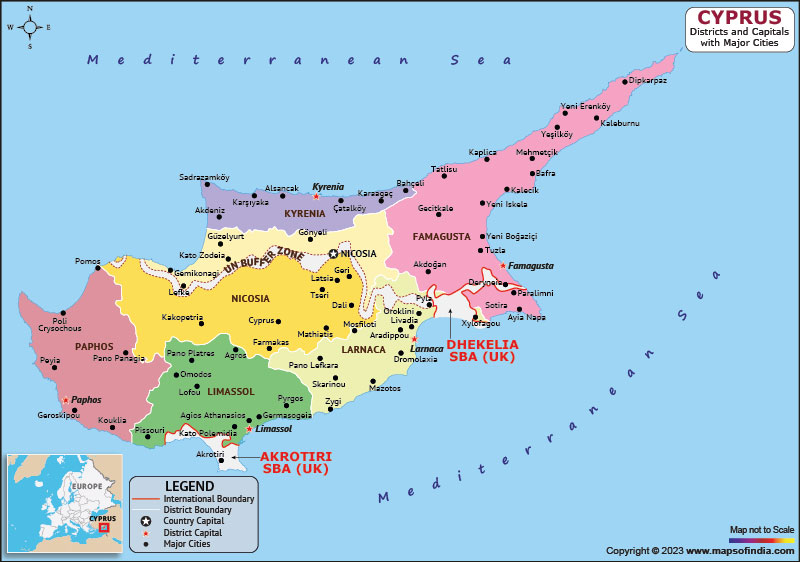Situated in the eastern Mediterranean, Cyprus is an island nation spanning approximately 9,251 square kilometers. The capital and most populous city is Nicosia, positioned in the center of the island, and steeped in a rich history with a variety of cultural and historical landmarks such as the Venetian walls, Buyuk Han, and the Archbishop's Palace. The population of Cyprus is estimated to be around 1,230,442 inhabitants, predominantly residing in the southern region of the island.
History
Cyprus has a long and complicated history that dates back more than 10,000 years. The island has been home to many different cultures over the course of its history, including the Mycenaeans, Phoenicians, Greeks, Romans, and Byzantines. The Crusaders took over Cyprus in 1192, and they held it until 1489, when they sold it to the Venetians. The island was taken over by the Ottoman Empire in 1571, and it remained in Ottoman hands until the 20th century. Cyprus won its independence from Britain in 1960, but since Turkey invaded and seized the island's northern region in 1974, the nation has been divided. Now, the Turkish Republic of Northern Cyprus controls the northern third of the island, with the Republic of Cyprus occupying the southern two-thirds.
Culture
Cyprus's culture is a fusion of numerous traditions from the Middle East, Greece, and Turkey. For instance, Cypriot food is distinguished by its use of Mediterranean ingredients and spices, but it also includes a variety of special recipes that pay homage to the island's history and geography. In Cyprus, meze, a sampling of small meals, is a common dining style. Meeze often consists of a variety of meats, seafood, vegetables, and dips. Cypriot culture includes a variety of traditional musical and dance forms that showcase the island's rich cultural heritage. Examples include the çiftetelli, a Turkish folk dance that is frequently performed at weddings and other events, and the zeibekiko, a Greek dance that emphasises improvisation and individual expression.
Language
Greek and Turkish are the two official languages of Cyprus, and they are spoken in the south and north of the island, respectively. Almost 80% of people in the south speak Greek as their mother tongue, making it the most common language there. Turkish is the predominant language in the north, where 80% of the people are native speakers.
Geography
Cyprus has a diverse environment that stretches from the rich coastal plains in the south and northeast to the Troodos Mountains in the island's centre. The island's climate is usually Mediterranean, with hot, dry summers and warm, rainy winters. It also features a number of rivers and natural harbours.
| Official Name | Republic of Cyprus |
| Capital | Nicosia |
| Population | 1230442 |
| Area | 9,251 km2 |
| Currency | Euro (EUR) |
| Religion | Christianity |
| Language | Greek, Turkish |
| Major Cities | Larnaca, Limassol |
FAQs
Q1: What is the climate like in Cyprus?
Cyprus has a typical Mediterranean climate, with hot and dry summers, and mild and wet winters.
Q2: What is the capital of Cyprus?
Nicosia is the capital city of Cyprus.
Q3: What is the currency of Cyprus?
Cyprus’s currency is the Euro (EUR).
Q4: Which is the largest city of Cyprus?
Nicosia is the largest city in Cyprus.
Last Updated on: April 27, 2023
